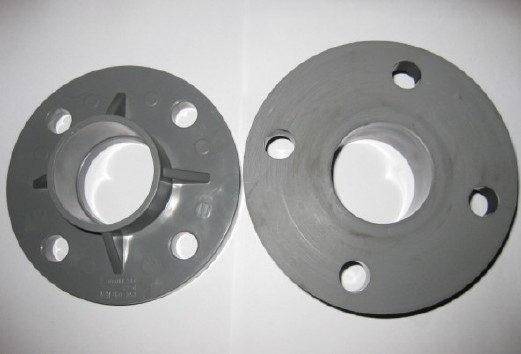Analysis and Solutions to Common Problems of Brake Friction Pads
Publication Date:
2022-11-21
The friction coefficient of brake pads being too high or too low will affect the braking performance of a car. Especially when a car needs to brake urgently at high speed, a friction coefficient that is too low will result in unresponsive braking, while a friction coefficient that is too high will cause the tires to lock up, leading to vehicle fishtailing and skidding, posing a serious threat to driving safety. According to national standards, the suitable operating temperature for brake pads is 100~350°C. However, many inferior brake pads experience a sharp drop in friction coefficient when the temperature reaches 250°C, causing complete brake failure at that point. Generally, according to SAE standards, brake pad manufacturers select the FF grade rated coefficient, with a friction rated coefficient of 0.35~0.45.
The friction coefficient of brake friction pads being too high or too low affects the braking performance of a car. Especially during emergency braking at high speeds, a too low friction coefficient results in unresponsive braking, while a too high friction coefficient causes wheel lock-up, leading to vehicle fishtailing and skidding, posing a serious safety risk. According to national standards, the suitable operating temperature for brake friction pads is 100~350℃. However, many inferior brake friction pads experience a sharp drop in friction coefficient at 250℃, causing complete brake failure. Generally, according to SAE standards, manufacturers select FF grade rated coefficients, with a friction coefficient rating of 0.35~0.45.
What is the relationship between the lifespan of brake friction pads and hardness?
The lifespan of brake friction pads is not necessarily related to surface hardness. However, when surface hardness is high, the actual contact area between the brake friction pad and the brake disc is small, which often affects the service life. The main factors affecting the lifespan of brake friction pads include hardness, strength, and wear resistance of the friction material. Generally, the lifespan of front brake friction pads is 30,000 km, and the rear brake friction pads last about 120,000 km.
Why does vibration occur during braking?
It is often caused by deformation of the brake friction pads or brake discs, which relates to the materials, machining precision, and heat-induced deformation of the pads and discs. The main reasons include uneven thickness of the brake disc, poor roundness of the brake drum, uneven wear of the brake friction pads, as well as thermal deformation and hot spots.
In addition, deformation or improper installation of the brake caliper, as well as unstable friction coefficients of the brake friction pads, can also cause vibration during braking. Moreover, if the vibration frequency generated by the brake friction pads during braking resonates with the suspension system, vibration will also occur.
What is the impact of water immersion on braking performance?
After water immersion, a layer of water film forms between the brake friction pads/shoes and the brake discs/drums, reducing friction and affecting braking effectiveness. Additionally, water inside the brake drum is not easily dispersed.
For disc brakes, the impact of water immersion on braking performance is less significant because the brake friction pads have a small contact area and are exposed, so water droplets do not remain. Due to centrifugal force when the wheel rotates, water droplets on the brake disc quickly disperse. Simply pressing the brake pedal several times after water immersion removes the residual water layer.

However, for drum brakes, after water immersion, it is necessary to drive while repeatedly pressing the brake pedal—alternating between accelerating and braking several times—to evaporate the moisture between the brake shoes and brake drum, thereby restoring braking effectiveness.
Why does noise occur during braking?
Noise during braking mainly arises from resonance or mutual interference of suspension system components. However, noise or squealing can also be caused by improper material use or deformation of the brake disc, unqualified hardness, porosity, friction characteristics, and compression properties of the brake friction pads, moisture-induced rust on the brake pads and discs (which can be resolved after a few braking actions), overly hard metal wires in the brake pad formula, wear warning of brake friction pads, and mechanical brake pads scraping the disc.
Why do newly installed brake friction pads feel soft during braking?
After replacing new brake friction pads, a soft braking feel may occur due to reasons such as improper installation of the brake pads, contamination on the brake disc surface that was not cleaned, faults in the brake lines or insufficient brake fluid, incomplete air removal in the brake hydraulic cylinder, excessive wear and uneven surface of the brake disc, and substandard quality of the brake friction pads.
Why does brake lag occur?
Brake lag may be caused by failure of the brake return spring, improper clearance or overly tight assembly dimensions between the brake friction pads and brake disc, unqualified thermal expansion properties of the brake friction pads, and poor return of the parking brake.
Why does smoke appear during braking?
Brake friction pads contain about 20% organic materials, which decompose and produce smoke at excessively high temperatures, forming an oily layer on the pad surface that affects braking performance. Possible causes include frequent braking on downhill slopes causing excessive heat and smoke, and unqualified or excessive organic content in the brake pad formula.
Why does the backing plate of brake friction pads detach?
There are two cases of backing plate detachment: cracks between the backing plate and friction material, or cracks within the friction material itself. Possible causes include poor pretreatment of the backing plate, poor stability of the friction material, unqualified pressing process, poor adhesive quality, excessive operating temperature, incorrect installation, impacts, and hammering.
What is the function of the grooves in brake friction pads?
The grooves in brake friction pads serve to release gases, reduce noise and alter the product's natural frequency, discharge wear debris, and enhance the adhesion between the friction material and the backing plate.
COOKIES
Our website uses cookies and similar technologies to personalize the advertising shown to you and to help you get the best experience on our website. For more information, see our Privacy & Cookie Policy
COOKIES
Our website uses cookies and similar technologies to personalize the advertising shown to you and to help you get the best experience on our website. For more information, see our Privacy & Cookie Policy
These cookies are necessary for basic functions such as payment. Standard cookies cannot be turned off and do not store any of your information.
These cookies collect information, such as how many people are using our site or which pages are popular, to help us improve the customer experience. Turning these cookies off will mean we can't collect information to improve your experience.
These cookies enable the website to provide enhanced functionality and personalization. They may be set by us or by third-party providers whose services we have added to our pages. If you do not allow these cookies, some or all of these services may not function properly.
These cookies help us understand what you are interested in so that we can show you relevant advertising on other websites. Turning these cookies off will mean we are unable to show you any personalized advertising.
Hotline
Address: 240 meters west of the intersection of Tangxin Line and Jianhua Road, Qiantang District, Hangzhou, Zhejiang Province
Email:HRdjmc@hzdjfm.com

Copyright © Hangzhou Dongjiang Friction Materials Co., Ltd. All rights reserved. Powered by www.300.cn | Business Card

